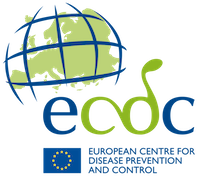Antimicrobial consumption in the EU/EEA (ESAC-Net) - Annual Epidemiological Report for 2023
For 2023, 27 countries (25 European Union (EU) Member States and two European Economic Area (EEA) countries – Iceland and Norway) reported data on antimicrobial consumption.
Antimicrobial consumption is expressed as the number of defined daily doses (DDD) per 1 000 inhabitants per day. The Anatomical Therapeutic Chemical (ATC) classification index with defined daily doses (ATC/DDD Index) 2024 was used for the analysis of 2023 data, and for historical data when possible.
EU targets on antimicrobial consumption
In 2023, the EU population-weighted mean total consumption (community and hospital sectors combined) of antibacterials for systemic use (ATC group J01) was 20.0 DDD per 1 000 inhabitants per day (country range 9.6−28.5). This was 1% higher than in 2019 (baseline year), and 4.1 DDD per 1 000 inhabitants per day higher than the 2030 target of 15.9 DDD per 1 000 inhabitants per day. For the EU overall, there was no statistically significant trend detected between 2019 (baseline year) and 2023.
The EU population-weighted mean percentage of consumption of WHO ‘Access’ group antibiotics (see page 3) was 61.5% in 2023 (country range 41.7%−75.1%). This was 0.4 percentage points higher than 2019 (baseline year) and 3.5 percentage points below the 2030 target of > 65%. For the EU overall, there was no statistically significant trend detected between 2019 (baseline year) and 2023.
Community (primary care sector)
In the community, the EU/EEA population-weighted mean consumption of antibacterials for systemic use (ATC group J01) was 18.3 DDD per 1 000 inhabitants per day (country range: 8.8–26.7) in 2023. There was no statistically significant trend between 2019 and 2023 for the EU/EEA overall.
At EU/EEA level, the most consumed subgroup of antibiotics was penicillins (J01C) (47%), followed by macrolides, lincosamides and streptogramins (J01F) (17%), cephalosporins and other beta-lactams (J01D) (12%), tetracyclines (J01A) (9%), quinolones (J01M) (7%), other antibacterials (J01X) (5%), sulfonamides and trimethoprim (J01E) (3%), and other groups (J01B, J01G and J01R) (0.5%). A statistically significant decreasing trend was observed between 2019 and 2023 for ‘Other groups (J01B, J01G, and J01R)’.
The EU/EEA population-weighted mean ratio of consumption of mainly ‘broad-spectrum’ penicillins, cephalosporins, macrolides (except erythromycin) and fluoroquinolones to the consumption of narrow-spectrum penicillins, cephalosporins and erythromycin in the community was 5.5 (country range: 0.1–97.9). During 2019–2023, a statistically significant increasing trend was observed for this ratio in the EU/EEA overall.
Hospital sector
In the hospital sector, the EU/EEA population-weighted mean consumption of antibacterials for systemic use (ATC group J01) was 1.6 DDD per 1 000 inhabitants per day in 2023 (country range: 0.8–3.2). There was no statistically significant trend detected between 2019 and 2023 for EU/EEA overall.
At EU/EEA level, the most commonly consumed subgroup of antibiotics was penicillins (J01C) (34%), followed by cephalosporins and other beta-lactams (J01D) (28%), other antibacterials (J01X) (12%), quinolones (J01M) (9%), macrolides, lincosamides and streptogramins (J01F) (8%), sulfonamides and trimethoprim (J01E) (4%), other groups (J01B, J01G, and J01R) (3%) and tetracyclines (J01A) (3%). A statistically significant decreasing trend was observed at EU/EEA level between 2019 and 2023 for quinolones (J01M) and for other groups (J01B, J01G, and J01R); and a statistically increasing trend was observed for other antibacterials (J01X), which was mainly due to an increase in the consumption of polymyxins (J01XB).
In 2023, the proportion of mainly ‘broad-spectrum’ antibiotics (ATC groups J01XA, J01DD, J01DE, J01DF, J01DH, J01MA, J01XB, J01CR05, J01XX08, J01XX11, and J01XX09) consumed out of all hospital sector consumption of antibacterials for systemic use was 40.1% (country range 14.2%− 65.0%). During 2019–2023, there was no statistically significant trend detected for the EU/EEA overall.
The EU population-weighted mean percentage of consumption of WHO ‘Reserve’ group antibiotics (see page 3) in the hospital sector was 5.4% (country range 0.7%−15.9%) in 2023. A statistically significant increasing trend was observed between 2019 and 2023 for the EU/EEA overall.
Public health conclusions
The poor progress towards the EU targets on antimicrobial consumption and the continued increase in the consumption of WHO ‘Reserve’ and ‘broad-spectrum’ antibiotics highlights the need to strengthen efforts to address unnecessary and inappropriate antimicrobial use at all levels of healthcare (i.e. community, hospital and long-term care sectors) in the EU/EEA.
As emphasised in the Council Recommendation on stepping up EU actions to combat antimicrobial resistance in a One Health approach (2023/C 220/01), national action plans should include key elements to promote prudent use of antimicrobials, including antimicrobial stewardship programmes with good diagnostic practices and infection prevention and control activities. The EU Council Recommendation also emphasises the importance of the timely availability of standardised data on antimicrobial consumption for benchmarking, and on antimicrobial resistance for clinical guidance.
Download








